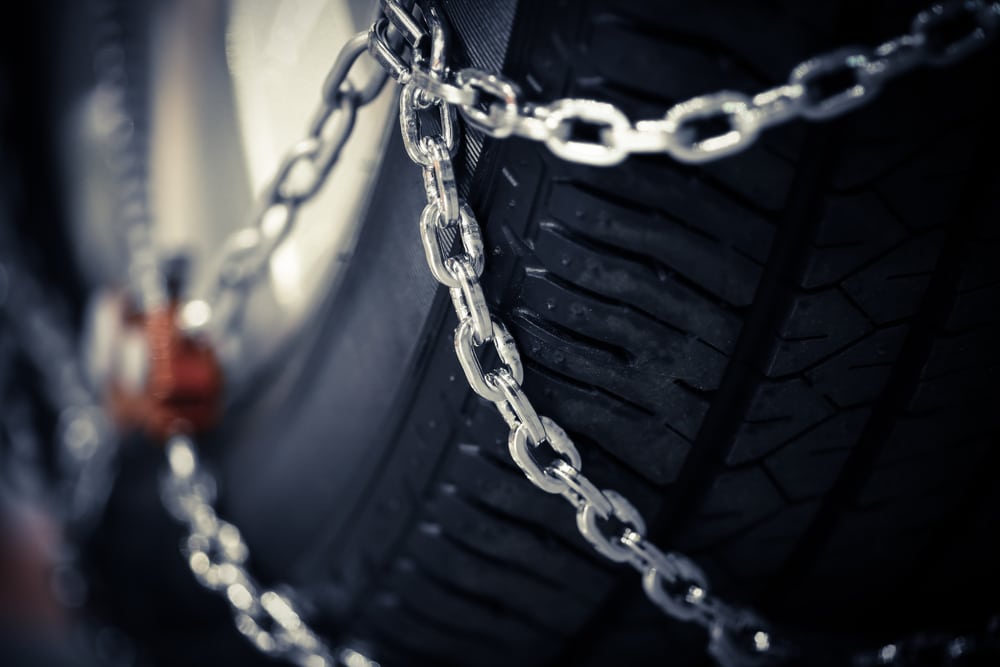Winter is fast approaching, and with it comes increased driving risks for your employees. In fact, according to the Federal Highway Administration, approximately 76,000 people are injured in traffic accidents during snowfall each year. These accidents occur for a variety of reasons but are commonly caused by snowy or icy road conditions.
To reduce winter driving accidents, many fleets equip their vehicles with traction devices like snow chains. These devices help tires get a stronger grip on the road, which can prevent vehicles from skidding on wet, snowy or icy roads. To install traction devices properly, your drivers should consider doing the following:
- Take the snow chains out of their storage pouch and untangle them. Then, lay the chains out, making sure that chain hooks are facing up and all tensioners are open. During winter months, drivers should be instructed to carry properly sized traction devices and check them regularly for damage.
- Brush any snow or debris off the snow chains before draping them over the tire.
- Connect the chains, ensuring the same number of links cover both the inside and outside of the tire.
- Drive the truck forward slightly. Then, use a tensioning tool to tighten the chains. Chains should be snug but not too tight.
As their employer, it’s your job to ensure your employees know how to install traction devices on a vehicle’s tires safely. Consider having drivers practice installing traction devices in a controlled environment before using them in real-world scenarios. It’s also important that, when installing traction devices on the road, drivers know to pull off to a safe and level area.
Keep in mind that most states have regulations related to traction devices. These regulations dictate when commercial vehicles are allowed to use them and whether or not drivers are required to carry them. To review these regulations by state, click here.
Fill out the form below with any questions or to start a conversation. Be sure to follow us on LinkedIn and like us on Facebook for more tips and industry news.
Related Links:

